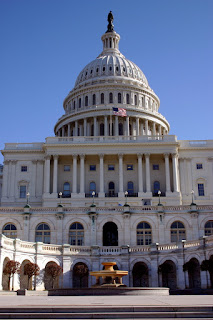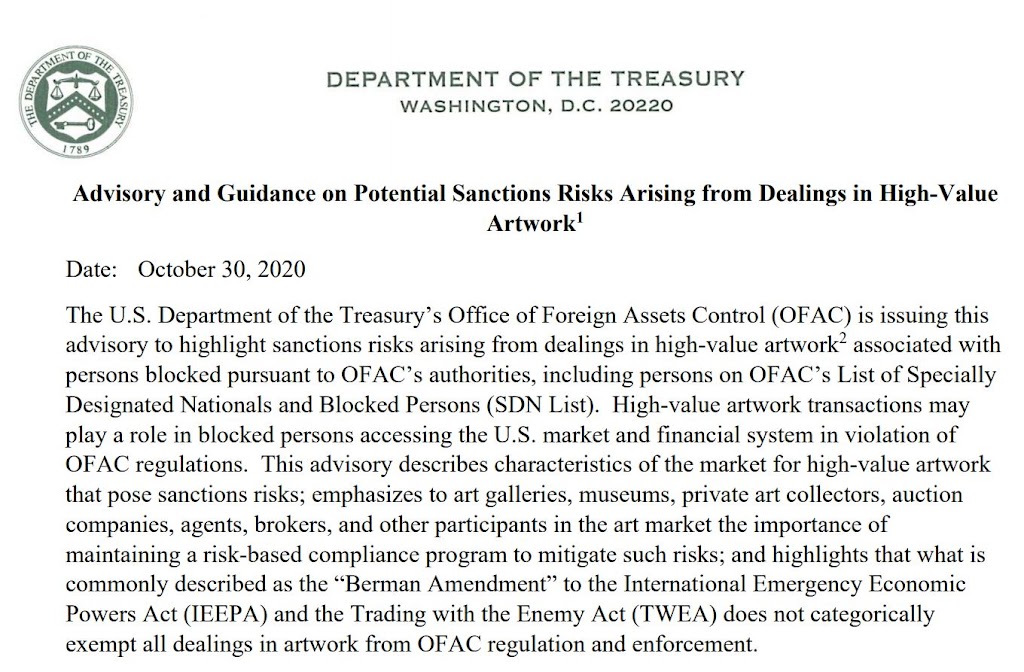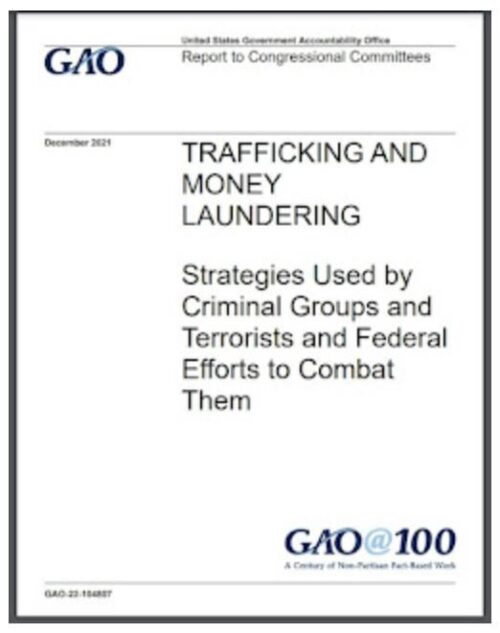Proposed Bill Enlists Art & Antiquities Dealers in the Fight Against Money Laundering
The U.S. House of Representatives will consider a bill that adds art and antiquities dealers to the Bank Secrecy Act (BSA). Introduced last Friday by Representative Luke Messer (R-IN-6), H.R. 5886 would aid law enforcement’s effort to uncover money laundering and terrorist financing schemes.
Titled the “Illicit Art and Antiquities Trafficking Prevention Act,” the bill replies “yes” to the question, Shouldn’t Art and Antiquities Sellers Be Subject to Anti-Money Laundering/Counter-Terrorist Financing Laws?, and it satisfies one of the six proposed recommendations to combat cultural heritage crime.
America’s anti-money laundering and counter-terrorist finance laws (AML/CTF) such as the BSA generally require luxury and cash-intensive industries to satisfy recordkeeping requirements to identify and report possible criminal activity. Banks and casinos are just some of the sectors already required to file Suspicious Activity Reports (SARs) with U.S. Treasury’s Financial Crimes Enforcement Network (FinCEN). Under the terms of the legislation proposed last week, art and antiquities dealers also would be included.
Law enforcement officials depend on private sector cooperation to expose money launderers and terrorist financiers who thrive on opportunities to wash dirty money inside clean business transactions. As U.S. Treasury Secretary Steven T. Mnuchin pointed out at a FinCEN awards ceremony held on May 8, “Industry reporting under the BSA is critical to supporting law enforcement investigations that combat money laundering and other financial crimes.”
Money laundering takes many forms and can be accomplished through a variety of stealthy maneuvers. FinCEN describes money laundering this way:
Money laundering is the process of making illegally-gained proceeds (i.e. “dirty money”) appear legal (i.e. “clean”). Typically, it involves three steps: placement, layering and integration. First, the illegitimate funds are furtively introduced into the legitimate financial system. Then, the money is moved around to create confusion, sometimes by wiring or transferring through numerous accounts. Finally, it is integrated into the financial system through additional transactions until the “dirty money” appears “clean.”
With regard to the art market, the Basel Institute on Governance, an independent nonprofit, makes an important observation in 2012 in its Basel Art Trade Guidelines that still holds true today:
In comparison with other trade sectors, the art market faces a higher risk of exposure to dubious trade practices. This is due to the volume of illegal or legally questionable transactions, which is noticeably higher in this sector than in other globally active markets. Far more serious than shady dealings in a legal grey area, the sector’s shadow economy encompasses issues ranging from looted art, professional counterfeiting and fake certificates to the use of art sales for the purpose of money laundering.
Because art and antiquities dealers sell objects that can fetch high prices, are portable, and are part of a marketplace that depends on confidentiality, discretion, and secrecy, their businesses are attractive to money laundering and other crimes, including terror financing. For some of the same reasons, dealers in precious metals, stones, and jewels were included in AML/CTF statutes like the BSA and, in like manner, art and antiquities dealers are fit for inclusion.
In fact, the Financial Action Task Force (FATF)–an inter-governmental body that publishes AML/CTF standards–specifically lists art and antiquities transactions as vulnerable to criminal exploitation. FATF’s 2015 report on the Financing of the Terrorist Organisation Islamic State in Iraq and the Levant (ISIL), moreover, flags antiquities trafficking as a source of funding for terror groups when when they exercise control over archaeological sites. The European Parliament earlier this month adopted an AML/CTF resolution that closely aligns with FATF’s standards.
The BSA is formally called the Currency and Foreign Transactions Reporting Act of 1970, and its provisions are codified in multiple statutory sections and regulations, the bulk of which can be found in 31 USC § 5311 et seq. and in 31 CFR Chapter X.
Congressman Messer’s measure to amend the BSA has been assigned to the House Financial Services Committee for review. Reader’s can follow the bill’s progress here.
UPDATE 6/15/18: Rep. Bill Foster (D-IL-11) co-sponsored the bill.
Photo credit: Ben Shafer/freeimages.com
Text and any original photos copyrighted 2010-2018 by Cultural Heritage Lawyer, a blog commenting on matters of cultural property law, art law, cultural heritage policy, antiquities trafficking, museum risk management, and archaeology. Blog url: culturalheritagelawyer.blogspot.com. Any unauthorized reproduction or retransmission without the express written consent of CHL is strictly prohibited. The materials presented on this site are intended for informational purposes only and should not be used as legal advice applicable to the reader’s specific situation. In addition, the provision of this information to the reader in no way constitutes an attorney-client relationship.




